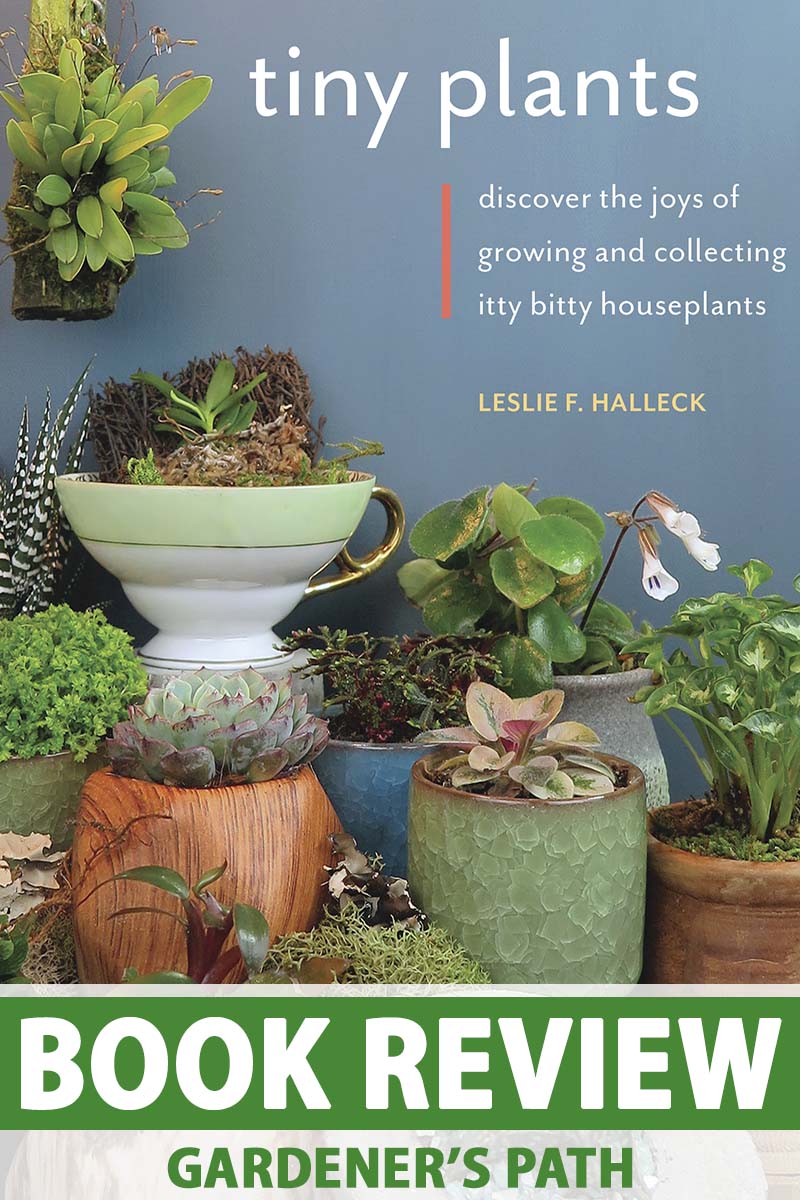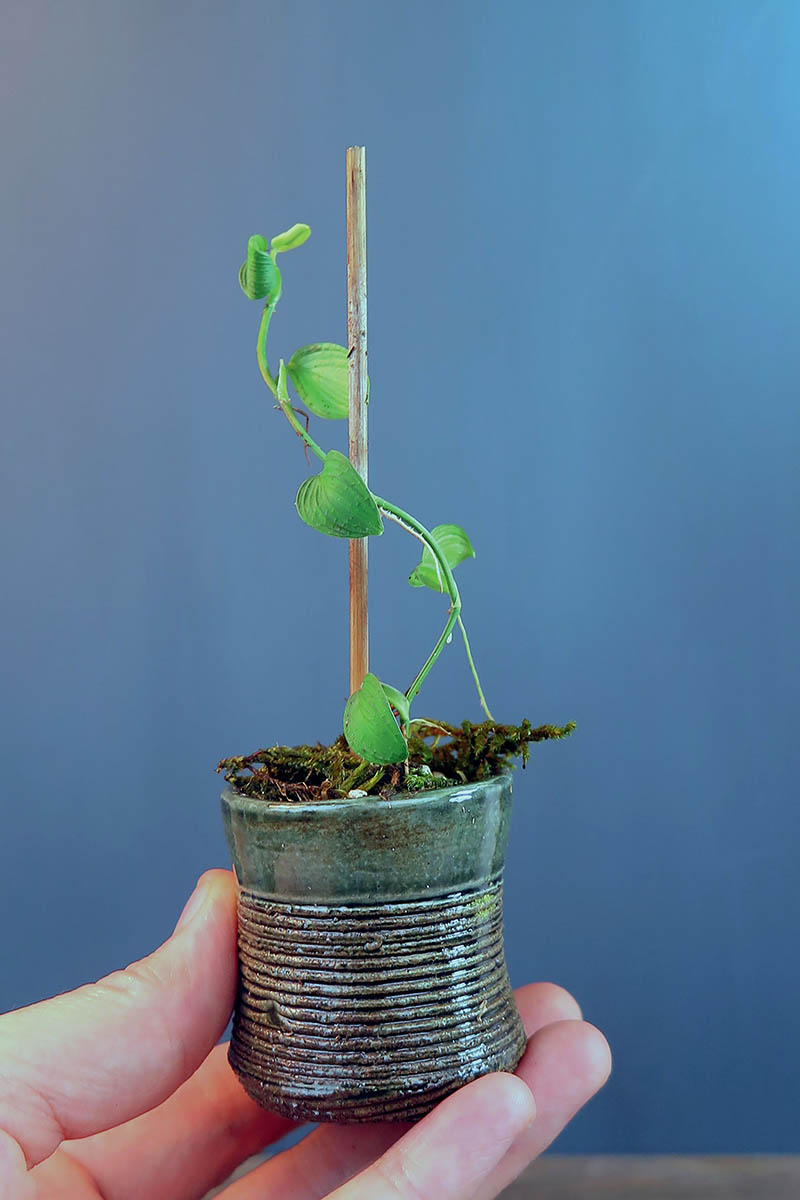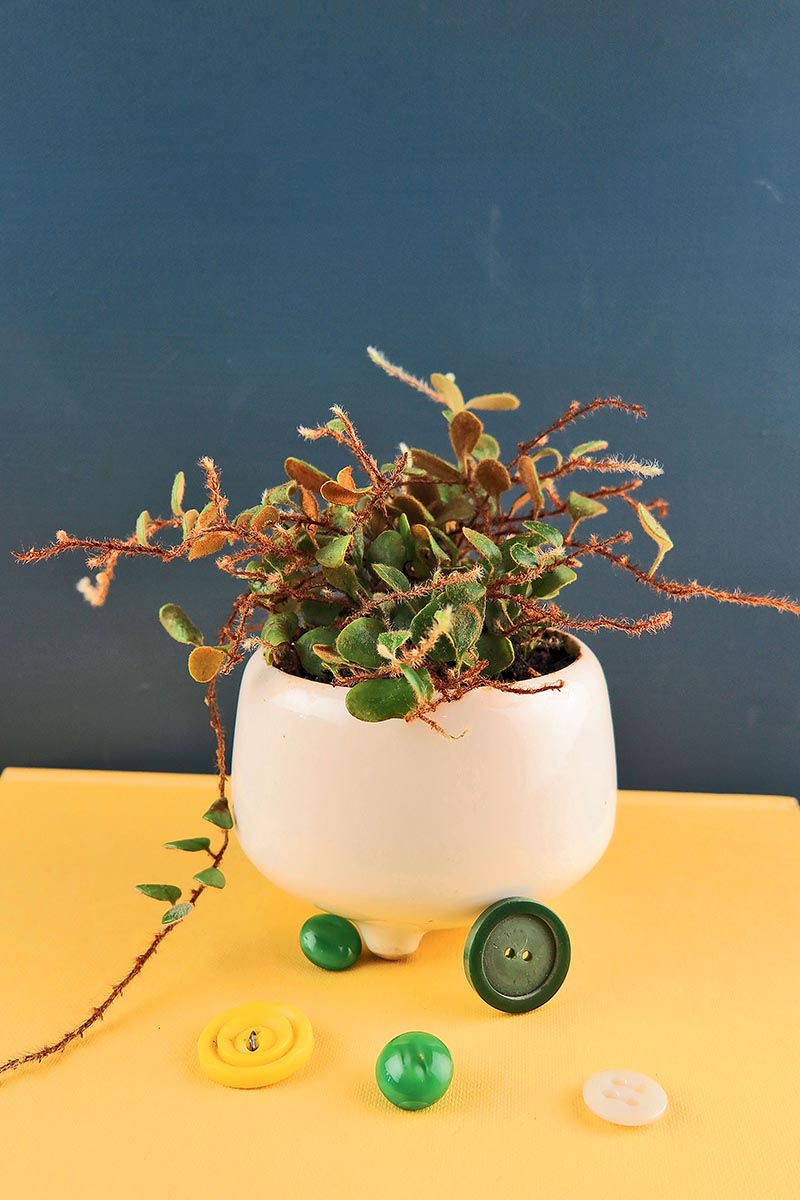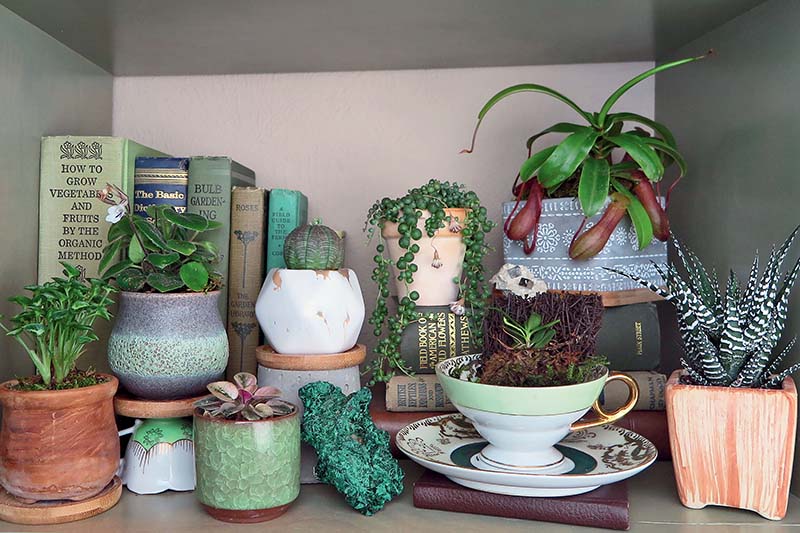If you’ve been wanting to garden indoors, but don’t really have a lot of free time or room for plants, have we got a book for you! Halleck offers both information and inspiration for current collectors of miniature flora, as well as aspiring “plant parents” with limited space and time, and a passion for “cute” botanical specimens. This book is a recipient of the 2022 Media Awards Silver Medal of Achievement presented by GardenComm: Garden Communicators International award in the Publisher/General Readership category. Join us! Here’s the lineup: Get ready for a close look at a whole new world of gardening.
What Are Tiny Plants?
The “itty-bitty houseplants” Halleck finds so cute and irresistible are not miniaturized versions of full-sized flora that are pruned to control their natural growth habits, as with bonsai. Instead, they are fully-formed, unaltered species of small stature that may go unnoticed in the wild, unless one seeks them out with deliberation and passion.
First Impressions
My first glimpse into the book was at random. I turned to a page near the middle and found a photo of a seemingly giant, open pair of pruning snips pointed menacingly at a tiny, African violet-type flower that actually appeared to be leaning away from the sharp tool in fright. The flower turned out to be a Sinningia, and I immediately wanted to learn more, like what species are available, and whether or not I could train my big, clumsy fingers to take care of them. Next, as I always do, I checked out the author’s credentials, and what I found was an outstanding resume of prestigious educational and professional achievements.
About the Author
Leslie F. Halleck made her first micro-plant discovery as a biology/botany undergrad student studying in the Luquillo Mountains of Puerto Rico. It was a miniature lithophyte, Lepanthes rupestris, a rock-dwelling orchid species that ranges between one-half and one inch in length. Thirty years later, in addition to the above-mentioned horticultural certification and undergrad degree, her accomplishments include a master’s degree in horticulture, and professional experience in botanical research, public gardens, landscape design, and green industry consulting. Halleck is an accomplished writer, teacher, gardener, and tiny plant expert. Her publications, workshops, and Plantgeek Chic blog offer “common-sense gardening advice and hands-on learning” to all who partake. I was sold. With my curiosity piqued and an author I admired, I moved on for an overview. In the introduction that follows, we learn that there’s a “… breathtaking array of micro-houseplants…” and that we’ll soon meet Halleck’s favorites – the ones with “big personalities,” ranging from tropicals to orchids, succulents to carnivorous plants. “Plant keepers” of all skill levels are invited to read on. Our introduction to the world of miniature flora begins with a preface, and a warm, inviting glimpse of the author as a college student in the rainforest collecting species data, and in her dorm surrounded by beloved houseplants. One of my favorite features of this fun, info-packed book is that Halleck has taken almost all of the photos herself, and artfully showcases her extensive collection of “perfectly petite plants.” Following the introductory material are five comprehensive chapters. Let’s look at the highlights of each.
The Botany of Tiny Plants
In this chapter, Halleck discusses the advantages of being small flora in a big world. She then adeptly condenses the geography of these small species into five easy-to-differentiate groups:
TerrestrialEpiphyticHemiepiphyticLithophyticChasmophytic
We also learn about the relationship of microspecies to the tiny insects that evolved with them.
Collecting and Caring for Tiny Plants
In this section we learn about different growing environments, and the containers and potting mediums that can be used to achieve them. There are descriptions of water types, methods of delivering moisture, and ways to increase ambient humidity. A handy table makes quick work of understanding light requirements, and a final section on propagation clarifies the differences between asexual and sexual reproduction. As you can imagine, if teeny flora set seeds, they are going to be minuscule!
Tiny Windowsill Plants
Throughout the book, the photos have captions that identify species, but in this section, we find concise one-page write-ups of varieties that can live well on windowsills, and enjoy a full-page photo of each. There are five types of foliage plants, followed by five types that flower, eight cacti and succulents, three carnivorous varieties, and one semi-aquatic option. Each section has an overview applicable to additional species in this category.
Tiny Plants Under Glass
This part offers a similar format, with in-depth species write-ups for specimens that grow well in glass enclosures, as well as full-page photos. There are seven foliage entries, five flowering, and four aquatic/semi-aquatic. And again, each section has an overview applicable to other varieties in the cohort.
Displaying Tiny Plants
Finally, Halleck rounds out the chapter content with suggestions for showing petite specimens to best advantage, by changing groupings as desired, pairing plants with collectible objects, using artistically crafted containers, and repurposing a variety of home items for unique presentations. In the concluding material, Halleck offers sources for supplies, including grow lights. She adds a footnote on how to best measure light to inform supply purchases. Acknowledgements and an author bio conclude this well-written book. Whether it’s a clubmoss in a fanciful jar on the work desk, a herringbone plant in a teacup on the bathroom shelf, or a living stone in a clay pot on the kitchen window sill, we can reap the same rewards as those who garden on a large scale: communion with nature, the opportunity to care for a living thing, and a serene sense of accomplishment. Tiny Plants: Discover the Joys of Growing and Collecting Itty-Bitty Houseplants I recommend getting a copy and beginning your mini-gardening adventure today! If you enjoyed reading our review of this book, we suggest additional book reviews you may find informative starting with these:
On Constructing Urban Gardens with Matt JamesRestoring Habitat with Charlotte Adelman and Bernard Schwartz’s Midwest Native Trees and ShrubsScaling it Down with Jessica Walliser’s Gardener’s Guide to Compact Plants






